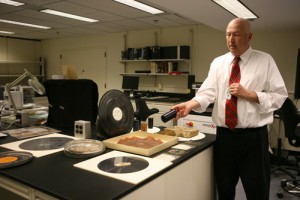
Edwin Hergesheimer. “Map Showing the Distribution of the Slave Population of the Southern States of the United States Compiled from the Census of 1860.” Washington: Henry S. Graham 1861. Geography and Map Division.
According to the 1860 census, the population of the United States that year was 31,429,891. Of that number, 3,952, 838 were reported as enslaved. The 1860 census was the last time the federal government took a count of the Southern slave population. In 1861, the United States Coast Survey issued two maps of slavery based on the census data: the first mapped Virginia and the second mapped Southern states as a whole.
The landmark map of the Southern states provided a graphic breakdown of those census returns, specifically focusing on slave population per county as a percentage of the total population in the southern portion of the nation. Using statistical cartography, low percentages were shown in light grey while higher percentages were illustrated using more intense shading. This provided a dramatic representation of slavery across the region. The counties along the Mississippi River and in coastal South Carolina show the highest percentage of slaves, while Kentucky and the Appalachians show the lowest.
According to Susan Schulten, history department chair at the University of Denver, the map reaffirmed the belief of many in the Union that secession was driven not by a notion of “states’ rights,” but by the defense of a labor system. A table at the lower edge of the map measured each state’s slave population, and contemporaries would have immediately noticed that this corresponded closely to the order of secession. However, the map also illustrated the degree to which entire regions – like eastern Tennessee and western Virginia – were largely absent of slavery and thus potential sources of resistance to secession.
(Schulten spoke about the map at a Library of Congress symposium last year. You can view the webcast here.)
The Southern stages slavery map is a featured item in the “The Civil War in America” exhibition, opening next month, and has never before been displayed by the Library to the public.
This map was, by some accounts, consulted by Abraham Lincoln throughout the course of the Civil War. It even appears in the famous 1864 painting of the president and his cabinet, titled “First Reading of the Emancipation Proclamation by President Lincoln,” by artist Francis Bicknell Carpenter — a print of which is in the Library’s collections.
Next Wednesday’s post will be the final spotlight on items from the exhibition. You can read about others in these previous blog posts:


